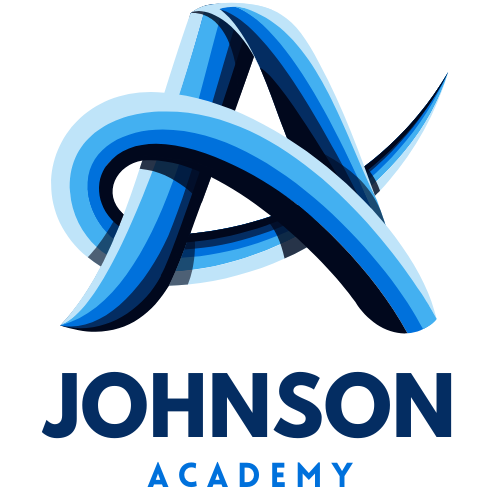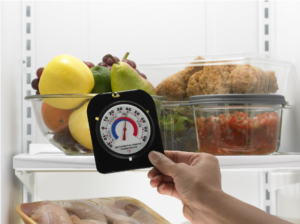Food Hygiene
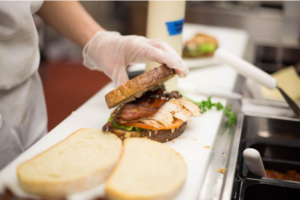
Maintaining food hygiene principles in the food industry is greatly important these days. This is the main point: in our modern food industry today, Food needs to be kept safe and secure for the people who eat it. If they don’t follow the food safety rules, they may get punished for killing people with bad food. They have to stick to the most important food hygiene principles for food safety, which are currently developing.
We have a course about Food Hygiene Basics, check this out.
The following procedures must be followed in the food industry to ensure the best food hygiene.
- Using a new chopping board, when making food,
- Using a new knife,
- Washing all the cutting surfaces and the kitchen permanently.
- Storing hot Food for not more than two hours,
- Keeping The house clean,
- Keeping the place insect-free,
- Cleaning the equipment and cutlery properly,
- Limited body touch with food,
- Improved personal hygiene.
Without proper hygiene measures, both buyers and sellers are to face consequences. They have to face various losses and punishments up to death sentences for lack of food hygiene.
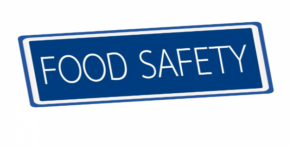
Understanding Food Hygiene
Definition of Food Hygiene
Food hygiene is related to the conditions and measures needed to guarantee the safety of Food during production and consumption. It contains the practices that can avoid contamination and maintain cleanliness, as well as everything needed for handling and storing Food.
Check out our Food Hygiene Essentials Course on Jobsland
Key Principles of Food Hygiene
Key principles of food hygiene are discussed below:
- Preventing Contamination: Keeping Food free from harmful bacteria, viruses, and other contaminants.
- Cleanliness: to keep all work areas, utensils, and equipment clean and sanitized.
- Safe Handling and Storage: Food should be kept at the right temperatures and handled in ways that don’t lead to spoilage and contamination.
Personal Hygiene for Food Handlers
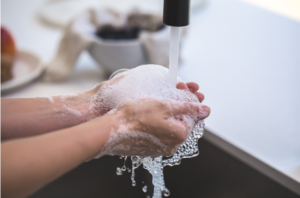
Importance of Personal Hygiene
Personal hygiene is essential for food handlers. If they don’t practice it, various contaminants from their bodies could spread. Food handlers should make sure their hygiene levels are at the top.
Handwashing Techniques
When to Wash Hands:
Washing hand is necessary before and after preparing Food, after touching a raw baby or a sick person, after using the bathroom, after touching raw meat and also whenever hands are dirty.
Steps for Correct Handwashing:
- Wash your hands with running water.
- Put soap on your hands.
- Scrub all areas of your hands thoroughly for at least 20 seconds.
- Rinse carefully.
- Dry with a clean towel or air dry.
Use of Personal Protective Equipment (PPE)
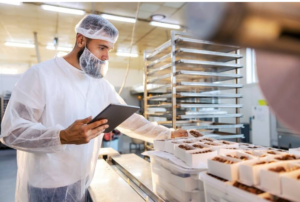
- Gloves: Wear disposable gloves when handling ready-to-eat foods.
- Hairnets and Caps: Cover hair to prevent hair from falling into Food.
- Aprons and Uniforms: Wear clean aprons and uniforms to protect Food from contaminants.
Health and Wellness of Food Handlers
If you are sick, please report it to your supervisor and do not work. Authorities should to check food handlers regularly to see whether they are fit for work. If any sickness is found, measures need to be taken.
Kitchen and Equipment Hygiene
Cleaning and Sanitizing Procedures
What’s the difference between cleaning and sanitizing?
- Cleaning removes dirt and other visible debris.
- Sanitizing destroys bacteria and other microbes.

Steps to Clean and Sanitise:
Thoroughly clean surfaces with soap and water and finish them using your choice of sanitizer.
Cleaning and sanitizing in food safety involves several crucial steps to prevent contamination and ensure hygiene.
First, remove any visible debris and food particles from surfaces and equipment. Next, apply a detergent and thoroughly scrub to eliminate grease and dirt. Rinse the cleaned surfaces with water to remove any remaining detergent. After cleaning, apply a suitable sanitizer. Make sure it covers all surfaces completely. Allow the sanitizer to sit for the recommended contact time to effectively kill bacteria and pathogens. Finally, let the surfaces air dry or use a clean cloth to dry them, avoiding any recontamination. Regularly performing these steps helps maintain a safe food preparation environment.
Maintenance of Equipment:
- Periodic checkup and repair: Regularly inspect or repair equipment and maintain it in good working condition.
- Correct Storage of Cleaning Equipment: Put cleaning equipment in a clean, dry location.
Waste Management
- Proper Disposal of Food Waste: Food waste should be disposed of in a timely and sanitary manner to avoid pests and contamination.
- Reusing, Recycling, and Reduction of Waste Policy: Promote recycling by creating a program and reducing waste by minimizing stock.
Food Storage and Temperature Control
Importance of Proper Food Storage
Proper food storage prevents food spoiling and contamination. It ensures that Food remains safe.
Proper food storage is essential for maintaining food safety, extending shelf life, and preventing foodborne illnesses. It involves keeping food at appropriate temperatures to prevent the growth of harmful bacteria—refrigerating perishable items promptly, freezing when necessary, and keeping dry goods in a cool – dry place. Proper storage also includes using airtight containers to protect against pests and contamination and ensuring that foods are stored in a clean environment. By labelling and organizing food items correctly, it’s easier to manage inventory and minimize waste. Overall, effective food storage practices are critical to preserving food quality, ensuring nutritional value, and safeguarding public health.
Temperature Control
- Modified Atmosphere Packaging (MAP) is a technique used to lengthen the shelf life of foods. It helps keep items fresh such as bakery items like the heart of wheat loaves with crunchy crusts, butcher meats like pork cuts, and ocean fish like cod filets.
- Maintaining safe temperatures for storing perishable and hot foods is essential. Keep foods that need refrigeration at 5°C (41°F) or lower. Make sure foods that should be hot stay above 60°C (140°F).
- Use of Thermometers and Temperature logs to inspect food prepared and stored at a safe temperature.
Storage Practices
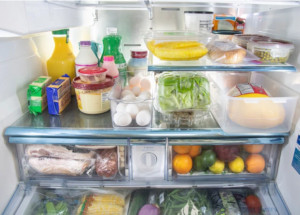
- FIFO (First In, First Out): Using the first goods to be purchased as the last to be used or be used before the newer stocks.
- Label and Date: All food in your home should label and date all food in your home to allow you to keep track of its freshness.
- Separate Storing: Handling and Storing Raw and Cooked Foods Separately
- Avoiding Cross-Contamination: Store raw and cooked foods separately to prevent cross-contamination.
Best Practices for Thawing and Cooling:
Best practices for thawing and cooling food are required to prevent bacterial growth and ensure food safety. For thawing, use methods such as refrigeration, cold water, or microwaving. Thawing in the refrigerator is safest, keeping food at a consistent, safe temperature. If using cold water, ensure the food is in a leak-proof package and change the water every 30 minutes. Microwave thawing should be followed by immediate cooking. For cooling, rapidly reduce the temperature of hot food by dividing it into smaller portions or using shallow containers. Stirring food in ice baths or using cooling paddles can further expedite the process. Ensure food reaches safe storage temperatures (below 40°F/4°C) within two hours to minimize the risk of bacterial growth.
Safe Food Handling Practices
Receiving and Inspecting Food Supplies
- Inspection: Upon receipt of food supplies, check for signs of spoilage or contamination.
- Rejection of Polluted or Degraded Goods: Reject items of Food that do not conform to quality standards.
Food Preparation Techniques
- Safe Cutting and Chopping Tips: Use different cutting boards for raw meat and other foods to prevent cross-contamination.
- Correct Cooking Temperatures for Time: Cook foods thoroughly to kill pathogens.
Complete our Advanced Catering Food Safety Course.
Serving and Displaying Food
- Serving Food Safely: Keep your hot food hot and cold foods cold when service begins.
- Using Clean and Safe Serving Utensils: Use clean and safe utensils when serving Food to avoid contamination.

Managing Allergens
Understanding Common Food Allergens
The most common food allergens include peanuts, tree nuts, milk, eggs, wheat, soy, fish, and shellfish. All of these allergens require handling.
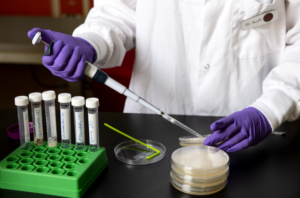
Preventing Cross-Contact
Foods with Allergen: All surfaces and equipment exposed to allergens should be cleaned and sanitized post-treatment.
Allergen-Free Foods: For allergen-free foods, use separate utensils and equipment, such as plates, knives, and cutting boards.
Labeling and Communication
Clearly Labeling Allergen Information: Clearly label foods containing allergens to inform customers.
Staff training on allergen management: Train staff on prevention of cross-contamination, safe handling of Food, and cleaning of kitchen surfaces.
Record Keeping and Documentation
Importance of Accurate record-keeping
Keeping accurate records allows you to show that all food safety-related activities are being properly carried out.
Types of Records to Maintain
Cleaning Schedules: Document cleaning schedules to ensure regular cleaning and sanitizing.
Temperature Logs: Keep temperature logs to monitor proper storage and cooking temperatures.
Health and Safety Inspections: Document health and safety inspections to track compliance.
Compliance with Food Safety Regulations
Ensure compliance with local and international food safety standards. Compliance with food safety regulations involves adopting established standards and guidelines designed to ensure the safety and quality of food products. This includes the following practices outlined by regulatory bodies such as the FDA, USDA, or local health departments. Key aspects include proper labeling, maintaining hygiene standards, regular inspections, and implementing Hazard Analysis and Critical Control Points (HACCP) systems to identify and manage potential hazards. Training staff in food safety practices, keeping detailed records, and staying updated with changes in regulations are also essential. Compliance not only prevents foodborne illnesses but also protects businesses from legal liabilities and helps maintain consumer trust.
How to Prepare for a Food Safety Audit
This printable checklist will help you prepare for your upcoming food safety audit. Use the list to create a pre-audit checklist of food safety measures.
- Training and Continuous Improvement
- Training Programs for Food Handlers
Benefit of Training Regularly: Food handlers who regularly attend training have the most up-to-date food safety practices.
Subjects to be covered: The manuals should cover the following topics:
- Personal hygiene
- Cleaning and sanitation
- Food-handling management
1. Personal Hygiene:
The first aspect of training hospitality workers is related to personal hygiene. It includes-
- keeping nails short and clean,
- washing hands,
- wearing, taking off, and washing uniforms.
Nails can easily attract dirt and unwanted insects while passing Food to customers. Therefore, the manuals should emphasize keeping nails short and clean. The same goes for hands. Hands should be properly washed using adequate and appropriate soap. The manuals should also cover the washing or changing of uniforms when soiled or after service. The emphasis should be on appropriate and thorough cleaning means.
2. Cleaning and Sanitation:
The second aspect of training hospitality workers concerns cleanliness and sanitation. It involves practices that involve the hospitality establishment as a whole. These practices help keep the establishment free from infection. They include
- Clearing, wiping, and cleaning dirty surfaces before contact or passing any food to customers.
- Use of appropriate cleaning and sanitization agents.
- Where there is Food, only food items should be kept and handled in the service area. Otherwise, unnecessary items can cause unnecessary distractions. They can also be a source of dirt or infection.
3. Food-Handling Management:
The final aspect of covering training materials concerns Food handling at the institution.
Food-handling management involves the implementation of proper practices and procedures to ensure the safety, quality, and hygiene of food from production to consumption. Key aspects include:
- Personal Hygiene: Ensuring that food handlers maintain high personal cleanliness standards, such as regular hand washing and wearing appropriate clothing.
- Cross-Contamination Prevention: Using separate equipment and surfaces for different types of food (e.g., raw meat and vegetables) to avoid spreading harmful bacteria.
- Temperature Control: Keeping food at safe temperatures during storage, preparation, and serving to prevent the growth of pathogens. This includes proper refrigeration, cooking, and holding temperatures.
- Cleaning and Sanitization: Regularly cleaning and sanitizing equipment, utensils, and surfaces to reduce the risk of contamination.
- Proper Storage: Storing food in appropriate conditions, such as in sealed containers and at correct temperatures, to maintain freshness and prevent spoilage.
- Training and Education: Providing ongoing training for food handlers on safe food handling practices and keeping them informed about new regulations and procedures.
- Monitoring and Record Keeping: Implementing systems to monitor critical control points and maintaining records of food safety practices to ensure compliance with regulations.
Effective food-handling management minimizes the risk of foodborne illnesses and ensures that food served to consumers is safe and of high quality.
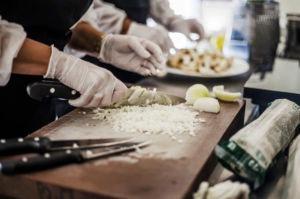
Continuous Improvement Strategies
Regular Review of Hygiene Practices: Regularly review hygiene practices to identify areas for improvement.
Feedback and improvements on food safety practices: Look for feedback on food safety practices from your staff and your customers.
Staying Updated with Food Safety Trends
Attending Workshops and Seminars: Attending workshops and seminars can help you to learn about the latest trends in food security.
Subscribing to Industry Newsletters: Subscribe to industry newsletters to receive updates on food safety.
Emergency Procedures
Handling Food Safety Incidents
Identify and remove contaminated Food from the supply chain. Follow procedures for Food recalls to protect consumers.
Managing Health Emergencies
Respond to Foodborne Illness Outbreaks: If a food item is linked to a case of foodborne illness, take swift action to stop the outbreak.
Practice Safe Crisis Health: Practice safe crisis health during pandemic wave-waves such as the COVID-19 pandemic.
Conclusion
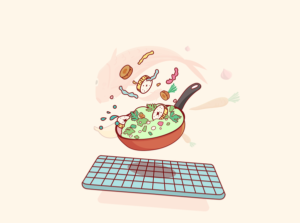
It is important in the food industry that good hygienic food practices are implemented to protect consumers and maintain quality. Adopting safe and sanitary food practices as well as the maintenance and monitoring of food safety across all processes ensures a high level of food safety and hygiene. Workers need to be provided with training to continuously maintain a high food hygiene standard. The training should be accurate and precise to develop good food safety practices. Records of the training sessions must be kept. Management should also conduct regular checks and audits to ensure all workers follow the standards set. Continuous improvement must also be achieved through constant checks and good food safety.
